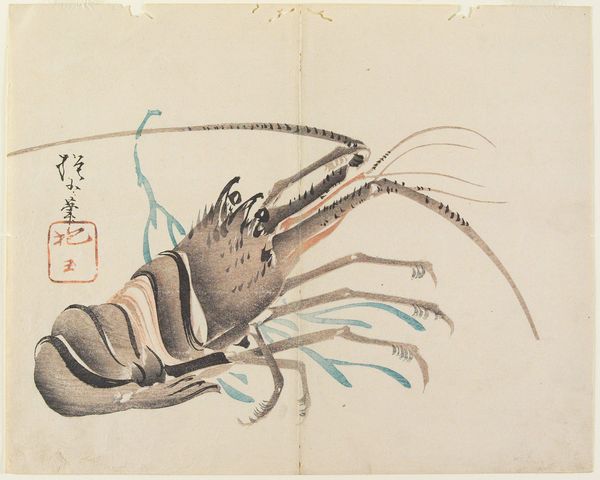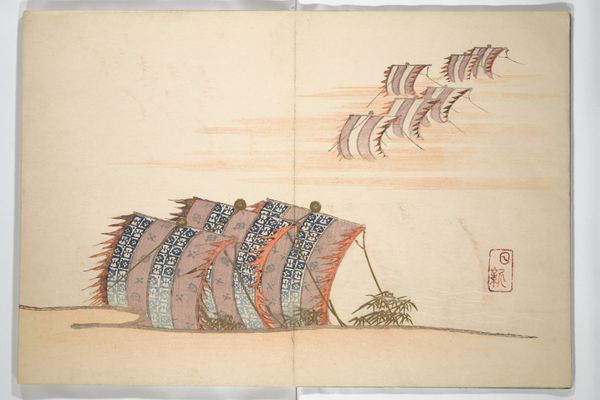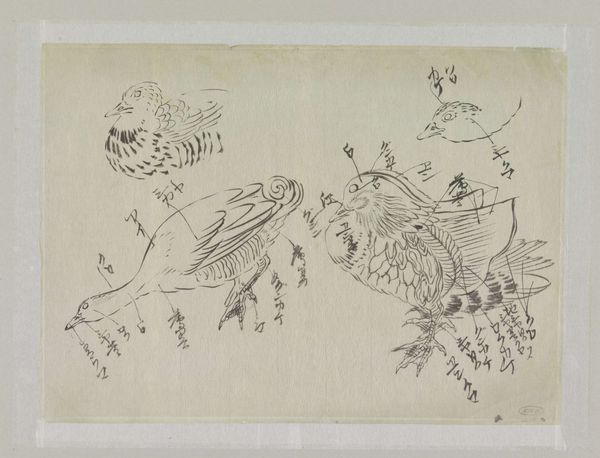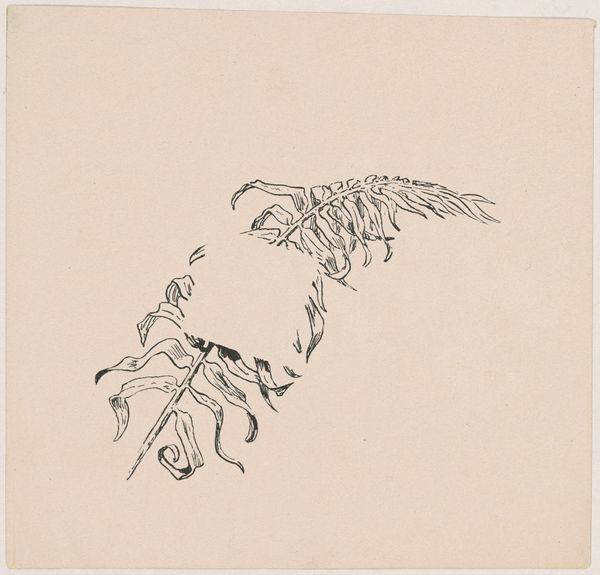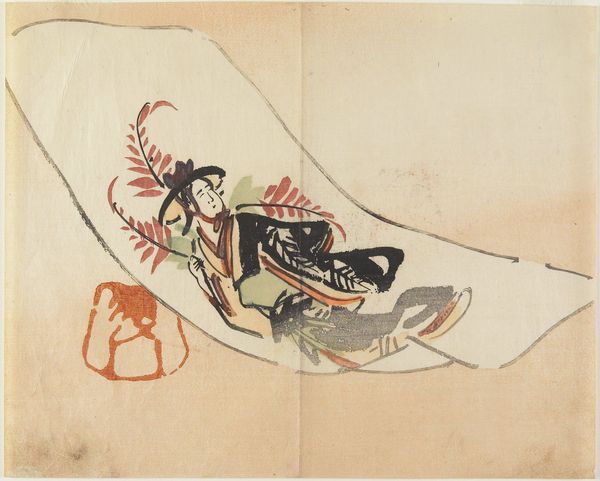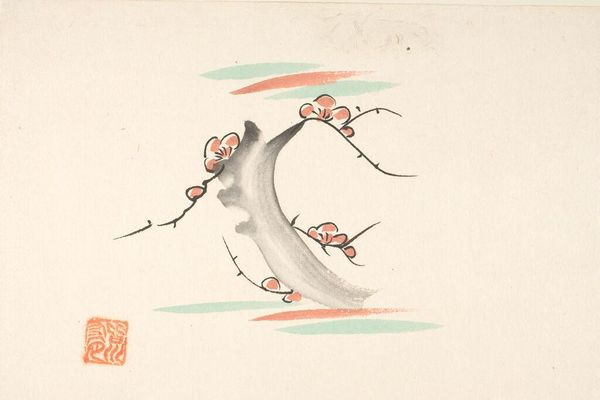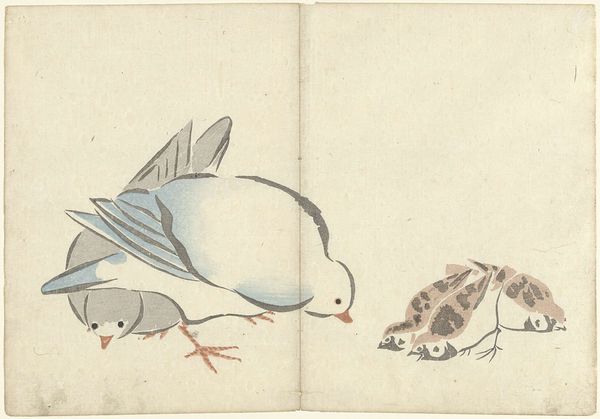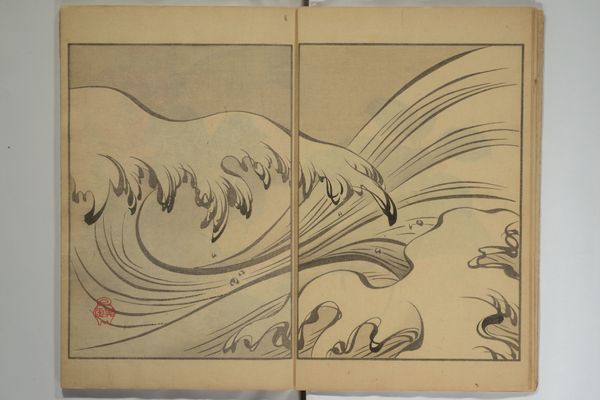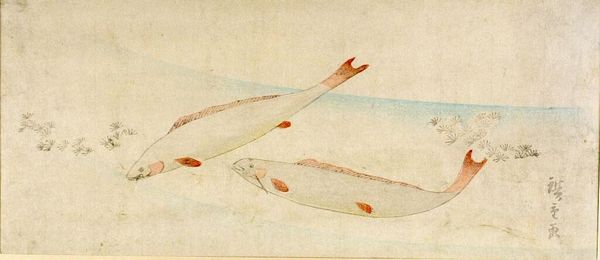
print, ink, color-on-paper, woodblock-print
# print
#
ukiyo-e
#
ink
#
color-on-paper
#
woodblock-print
Dimensions: 9 3/16 × 11 7/16 in. (23.4 × 29.1 cm) (image, sheet, uchiwa-e)
Copyright: Public Domain
Yamada Hōgyoku created this print titled, *Rice Cake and Iris Leaves for the Boy's Festival*, in 19th-century Japan. The print depicts Kashiwa-mochi, rice cakes filled with sweet bean paste, wrapped in oak leaves, and irises used during the Boy's Festival, now known as Children’s Day. Celebrated on the fifth day of the fifth month, the Boy’s festival upheld the samurai culture, celebrating boys' strength and success. Symbols like samurai helmets, irises, and Kashiwa-mochi represent bravery, health, and prosperity, values instilled in young boys. The iris, or shobu, was especially important, as its leaves resemble swords and its name is a homophone for "military affairs." The consumption of Kashiwa-mochi was believed to bring strength and good fortune. Hōgyoku’s delicate rendering of these symbols offers insight into the cultural and societal expectations placed on young boys. Yet, the detailed and intimate portrayal also prompts us to consider the emotional weight of these expectations, and their impact on the lived experiences of Japanese boys.
Comments
No comments
Be the first to comment and join the conversation on the ultimate creative platform.
